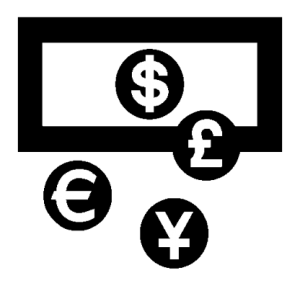For institutional investors keen to invest in quantitative indices, the structure of the investment is always a very important topic. Historically, investments into smart beta and risk premia strategies were structured as OTC deals between investment banks and institutional investment funds. These deals can provide tailor-made solutions in both a funded or unfunded format, and this solution is still quite popular among big institutional investors that are used to operating this way.
The emergence of new players in the industry, both on the buy and sell side, has necessitated that the structure of quantitative investment vehicles evolves. Increasingly, funds like UCITS are being used as a wrapper for investments in quantitative indices.
Investments structured as OTC contracts do have indeed their limitations. For one, the counterparty must have a large enough balance sheet, which limits or excludes some firms interested in quantitative products. Another drawback is that many institutional investors do not have the operational capacity to invest in OTC products. In particular, CSA and swap lines can nowadays be a long and painful process to negotiate between parties.

On the other hand, funds and especially UCITS funds, are gaining popularity, and not only among investors used to this type of vehicle. Increasingly regulations necessitate transparent legal structures, and UCITS offer a reassuring level of regulatory oversight and compliance. In most cases UCITS also offer healthy levels of liquidity. In addition, UCITS are required to offer certain levels of diversification and avoid concentration risk.
The successes of quantitative hedge funds over the last decades has raised the profile of quantitative versus discretionary investing strategies. There are two consequences to this. Firstly, many of these funds, in particular the most successful ones, are now closed to new investors. And, once again, not all fund mandates allow them to invest in hedge funds, especially when their domicile and registration type are considered exotic. Secondly, the increasing popularity of quantitative investing has led more traditional asset managers to add quantitative strategies to their product suite.
Funds like these offer a turnkey solution for investors wanting exposure to risk premia or smart beta indices, without the need to take on the associated operational costs. By the time a fund has come to market, a significant amount of due diligence has been done. For investors, this saves substantial time and expense. The UCITS industry has also evolved to the point where economies of scale reduce the expense burden. Investors therefore find it far more cost effective to invest in these funds, than to manage their own quantitative investments.

In recent years, GAM, Man Group, Blackstone and other firms have launched UCITS that specifically select shares according to risk premia strategies This is a global trend with similar funds being launched in Europe, the US and Asia. Many of the top investment firms are building quantitative research teams and planning to launch more of these funds.
Quantitative funds offer investment firms an opportunity to diversify their revenue streams and to continue growing their asset base when existing funds have to be closed to new investments.
Traditional investing methodologies evolved over decades into a standardized framework with labels like value, growth and market cap. Investors used these categories to diversify risk and the source of returns. The quantitative investment landscape is evolving into a similar framework, though it will also form part of a broader framework, incorporating active investing methodologies and multiple asset classes. This new framework will give investors a far wider spectrum to find sources of alpha and diversify risk.
Quantitative funds are now part of a new ecosystem that is evolving around the needs of institutional investors wanting to invest in quantitative indices. The Quantilia platform gives investors access to quantitative indices from multiple sources, including top tier banks, asset managers and hedge funds. Investors can back test multiple strategies to see how they perform alongside one another to find the right combination of strategies.

As the industry evolves, more investors will have access to funds from a wider variety of providers. Institutional investors will be able to build portfolios combining themes, investment styles, multiple risk factors, as well as smart beta indices, active funds or sector ETFs. Investors can then build portfolios that meet their very specific requirements, and they will be able to do so economically.
We can be fairly certain that the AUMs of funds in the industry will grow rapidly over the next few years as more quantitative funds come to the market, together with the expansion of smart beta and risk premia strategies.


